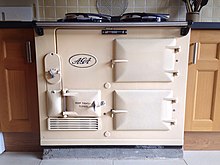
Nils Gustaf Dalén was a Swedish Nobel laureate and industrialist, engineer, inventor and long-term CEO of the AGA company and inventor of the AGA cooker and the Dalén light. In 1912 he was awarded the Nobel Prize in Physics for his "invention of automatic regulators for use in conjunction with gas accumulators for illuminating lighthouses and buoys".
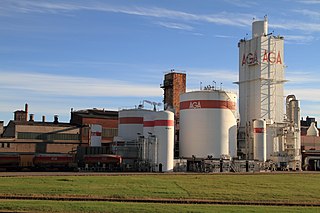
AGA AB, previously AB Gasaccumulator and AB Svenska Gasaccumulator, was a Swedish industrial gas company founded in 1904. Nobel Prize laureate Gustaf Dalén was an important part of the development of the company. Inventions included the AGA cooker and the Dalén light. In the 1990s, AGA conceived and developed HiQ for specialty gases. In 2000, AGA was integrated into Linde AG.
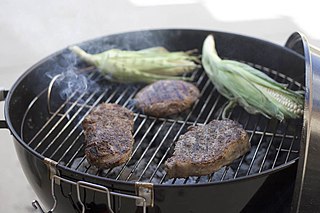
A barbecue grill or barbeque grill is a device that cooks food by applying heat from below. There are several varieties of grills, with most falling into one of three categories: gas-fueled, charcoal, or electric. There is debate over which method yields superior results.

An oven is a tool which is used to expose materials to a hot environment. Ovens contain a hollow chamber and provide a means of heating the chamber in a controlled way. In use since antiquity, they have been used to accomplish a wide variety of tasks requiring controlled heating. Because they are used for a variety of purposes, there are many different types of ovens. These types differ depending on their intended purpose and based upon how they generate heat.

A kitchen stove, often called simply a stove or a cooker, is a kitchen appliance designed for the purpose of cooking food. Kitchen stoves rely on the application of direct heat for the cooking process and may also contain an oven, used for baking. "Cookstoves" are heated by burning wood or charcoal; "gas stoves" are heated by gas; and "electric stoves" by electricity. A stove with a built-in cooktop is also called a range.

A hot plate or hotplate is a portable self-contained tabletop small appliance cooktop that features one or more electric heating elements or gas burners. A hot plate can be used as a stand-alone appliance, but is often used as a substitute for one of the burners from an oven range or a kitchen stove. Hot plates are often used for food preparation, generally in locations where a full kitchen stove would not be convenient or practical. They can also be used as a heat source in laboratories. A hot plate can have a flat surface or round surface. Hot plates can be used for traveling or in areas without electricity.

Induction cooking is performed using direct electrical induction heating of cooking vessels, rather than relying on indirect radiation, convection, or thermal conduction. Induction cooking allows high power and very rapid increases in temperature to be achieved: changes in heat settings are instantaneous.
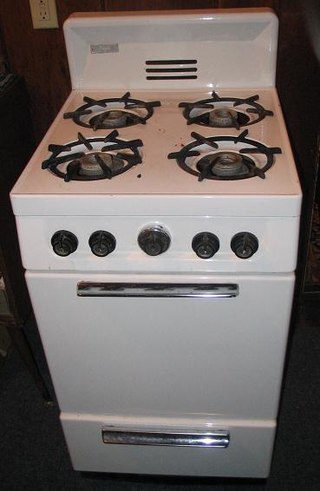
A gas stove is a stove that is fuelled by combustible gas such as natural gas, propane, butane, liquefied petroleum gas, syngas, or other flammable gas. Before the advent of gas, cooking stoves relied on solid fuels such as coal or wood. The first gas stoves were developed in the 1820s and a gas stove factory was established in England in 1836. This new cooking technology had the advantage of being easily adjustable and could be turned off when not in use. The gas stove, however, did not become a commercial success until the 1880s, by which time supplies of piped gas were available in cities and large towns in Britain. The stoves became widespread on the European Continent and in the United States in the early 20th century.
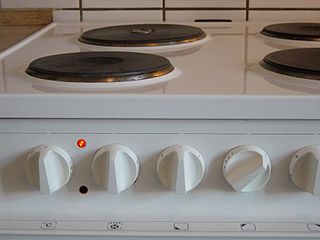
An electric stove, electric cooker or electric range is a stove with an integrated electrical heating device to cook and bake. Electric stoves became popular as replacements for solid-fuel stoves which required more labor to operate and maintain. Some modern stoves come in a unit with built-in extractor hoods.

AGA Rangemaster Group Limited is a British manufacturer of range cookers, kitchen appliances, and interior furnishings, which was acquired by the American Company, Middleby Corporation in September 2015 after it received a takeover approach from Whirlpool. The Group employs just over 2,500 people worldwide. "AGA" stands for Aktiebolaget Gas Accumulator.

A cooktop, stovetop or hob, is a device commonly used for cooking that is commonly found in kitchens and used to apply heat to the base of pans or pots. Cooktops are often found integrated with an oven into a kitchen stove but may also be standalone devices. Cooktops are commonly powered by gas or electricity, though oil or other fuels are sometimes used.
La Cornue is a French oven and cooking range manufacturer, founded in 1908 by Albert Dupuy, a Parisian herbalist and perfumer. The company currently produces three types of ovens: Château, CornuFé, and CornuChef.
The Chambers stove is a generic name for several different kitchen cooking appliances sold under the Chambers brand name from 1912 to approximately 1988. Their ranges and stand-alone ovens were known for their patented insulation methods, which enabled them to cook on retained heat with the fuel turned off.
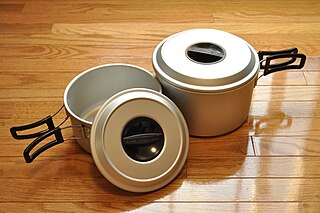
Cooker may refer to several types of cooking appliances and devices used for cooking foods.
Lincat is an industrial catering and foodservice equipment company based in Lincolnshire that is represented on the Alternative Investment Market. The company claims to be the UK's leading manufacturer of commercial catering equipment.

Constructa-Neff Vertriebs-GmbH is a German manufacturer of high-end kitchen appliances headquartered in Munich, Germany. The company was founded by Carl Andreas Neff in 1877 and has been a wholly owned subsidiary of BSH Hausgeräte GmbH since 1982.
For gas appliances, a flame supervision device (FSD) – alternative name: flame failure device (FFD) – is a general term for any device designed to stop flammable gas going to the burner of a gas appliance if the flame is extinguished. This is to prevent a dangerous buildup of gas within the appliance, its chimney or the room. Causes of flame failure include chimney downdraught, temporary interruption of the gas supply, gas under-pressure, liquid overspill on cooker hotplates or the draught from an oven door being opened and closed.
The Middleby Corporation is an American publicly traded commercial and residential cooking and industrial process equipment company based in Elgin, Illinois. The company manufactures commercial cooking equipment, industrial processing equipment, and residential appliances. The commercial cooking equipment side of Middleby does business with 97 out of the top 100 food service chains in the United States and internationally.

A bachelor griller, mini oven or mini kitchen is a countertop kitchen appliance about the size of a microwave oven but which can instead grill, bake, broil or roast food. It generally incorporates one or two heating elements at the top and bottom of the appliance, has one or two hobs on the cooktop, or a ceramic hotplate, and may incorporate a rotisserie.
